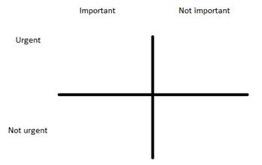I once asked a group of doctors, ‘if you had an extra hour in the day what would you do for yourself?’ The responses I got ranged from sleep and exercise, to spending time with family and friends, but one doctor simply said, ‘I would do more work’.
It led us to discuss time, work overload and balance, as well as their commitment to the profession. It’s these types of conversations that inspire the focus of our learning and development resources such as our Time management webinar and Workload and time management module.
Both courses are available and free for BMA members to use. Although they take an hour to complete, the techniques you’ll learn will help you create more time for the things you want to do.
Not got an hour? Here are some tips to fast track you some extra time:
Reconnect with your priorities
It sounds overly simple but when you get a moment think about the projects and activities you want to say ‘yes’ to. When you are clear on what you want, it can help you to say ‘no’ more effectively.
Is it really important?

A useful tool to help you prioritise your work is a two by two grid.
Draw your grid and label the top two squares ‘important’ and ‘not important’, then down the left-hand side, label the top square ‘urgent’ and the bottom one with ‘not urgent’. You can then allocate each of your tasks to the appropriate square. On completion, the top left square will contain your highest priority tasks that you should see to first. Those in the lower right-hand corner are your lowest priority tasks that you should fit in once all other tasks are complete.
Schedule according to your energy levels
We all have varying energy levels, so thinking about the best time to do different types of tasks is useful. You can schedule more demanding tasks for times in the day when you tend to have the most energy. This will make them seem less onerous and help you to complete them more efficiently.

